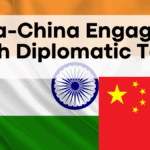In recent years, U.S. tariffs on imports have shaken global trade, impacting industries across various sectors. However, Indian auto component manufacturers have managed to avoid significant setbacks. Despite the ongoing trade tensions and tariff hikes between the U.S. and several countries, India’s auto parts suppliers have continued to perform well in global markets. This resilience can be attributed to a combination of strategic planning, cost advantages, and strong relationships with global markets. In this article, we explore why Indian auto component makers have largely dodged the impact of new U.S. tariffs and how they’ve positioned themselves for sustained success.
Table of Contents
Indian Auto Component Makers Dodge Impact of New US Tariffs
Key Factor |
Impact on Indian Auto Component Makers |
Source |
|---|---|---|
Diversified Export Markets |
Reduces dependence on U.S. market and mitigates risks from tariffs |
Official Link |
Strategic Trade Partnerships |
Access to various markets through free trade agreements (FTAs) |
Official Link |
Cost Competitiveness |
Lower operational costs provide pricing advantages |
Official Link |
Government Policies & Support |
Incentives and schemes boost exports and industry growth |
Official Link |
Focus on Innovation and R&D |
Cutting-edge products cater to modern automotive needs |
Official Link |
Why Indian Auto Component Makers Are Resilient Against U.S. Tariffs
1. Diversified Export Markets
One of the primary reasons Indian auto component makers have avoided the worst effects of U.S. tariffs is their ability to diversify export markets. Unlike countries that rely heavily on the U.S. as their primary trading partner, Indian manufacturers have expanded their reach to Europe, Asia, and several emerging markets. This global footprint ensures that even if the U.S. imposes higher tariffs, the impact is lessened because Indian companies are not overly reliant on a single market. This diversification strategy allows Indian suppliers to continue growing despite potential disruptions in any one region.
2. Strategic Trade Partnerships and Agreements
India’s auto component industry has benefited from several free trade agreements (FTAs) and strategic trade partnerships with countries across the globe. These agreements provide Indian manufacturers with easier access to markets outside the U.S., allowing them to hedge against risks from tariff hikes. By establishing strong trade links with Europe, ASEAN countries, and Latin America, Indian companies can shift their focus to other regions when faced with unfavorable conditions in the U.S. market. This flexibility enhances their resilience in the face of changing trade dynamics.
3. Cost Competitiveness
India’s ability to produce auto components at a lower cost than many developed countries has played a significant role in the resilience of its manufacturers. The lower labor costs and efficient production techniques used by Indian suppliers give them a distinct price advantage, especially in price-sensitive markets. Even with tariffs imposed by the U.S., Indian manufacturers are still able to offer competitive pricing, making them attractive to international buyers. This cost competitiveness allows Indian auto parts makers to retain their position in global supply chains, even in the face of tariff-induced price hikes.
4. Government Policies and Support
The Indian government has actively supported the auto component sector through various initiatives designed to boost manufacturing and exports. Programs such as the Production-Linked Incentive (PLI) scheme and export subsidies are helping Indian manufacturers enhance their capabilities and remain competitive on the world stage. These policies not only support the growth of the domestic auto industry but also provide a cushion against the impact of external factors like tariffs. The government’s backing has made the sector more resilient, allowing manufacturers to continue expanding despite external challenges.
5. Focus on Innovation and R&D
Indian auto component makers have placed significant emphasis on research and development (R&D), enabling them to stay ahead of the curve in terms of product innovation. By focusing on emerging technologies such as electric vehicles (EVs), lightweight materials, and advanced safety systems, Indian manufacturers have positioned themselves as key players in the evolving global automotive market. This forward-looking approach ensures that Indian auto component makers remain relevant, even as the automotive industry shifts toward new technologies and sustainability. Their ability to produce cutting-edge products helps them maintain strong demand, even when tariffs may affect cost competitiveness.
6. Robust Global Supply Chain Integration
Another key factor contributing to the success of Indian auto component manufacturers is their strong integration into the global automotive supply chain. Over the years, Indian suppliers have developed close working relationships with major automakers worldwide, making them integral parts of international vehicle production. This integration means that Indian auto components are in high demand, and any tariff-induced disruption is less likely to sever these crucial supply chains. Indian manufacturers’ role in global production networks provides them with a level of protection from the direct impact of U.S. tariffs.
7. Adaptability to Changing Industry Trends
The automotive industry is undergoing significant transformation, with trends like electrification, autonomous driving, and sustainable manufacturing becoming more prominent. Indian auto component makers have been quick to adapt to these changes by investing in the production of EV components, battery technology, and other innovative parts. This adaptability ensures that Indian manufacturers continue to cater to the evolving needs of global automakers, keeping their products in demand across diverse markets. This focus on the future of mobility helps shield them from the negative effects of tariffs and trade barriers.
FAQs
Q1: How do U.S. tariffs affect Indian auto component manufacturers?
Although U.S. tariffs have had a global impact, Indian auto component manufacturers have largely avoided significant disruption due to their diversified export markets and strategic partnerships. Their ability to cater to multiple regions, combined with cost advantages, minimizes the tariff’s effect.
Q2: Why is India’s auto component industry so cost-competitive?
India’s lower labor costs and efficient manufacturing processes give its auto component makers a competitive edge over other global suppliers. This cost advantage allows Indian manufacturers to maintain competitive pricing even when tariffs are imposed on their products.
Q3: What support does the Indian government provide to the auto component sector?
The Indian government supports the auto component industry through various initiatives such as the Production-Linked Incentive (PLI) scheme and export-friendly policies. These efforts help make Indian manufacturers more competitive internationally and reduce the impact of tariffs.
Q4: How is India adapting to the changing automotive industry?
Indian manufacturers are investing in R&D and innovation to meet the evolving demands of the global automotive market. They are focusing on the production of electric vehicle components, lightweight materials, and other advanced technologies, ensuring that they remain relevant in the future of mobility.
Q5: Can Indian auto component makers continue to grow despite tariff changes?
Yes, Indian auto component makers are well-positioned for continued growth due to their diversified markets, cost advantages, government support, and focus on innovation. These factors enable them to remain competitive and resilient in the face of changing tariffs and trade dynamics.
Click here to learn more





